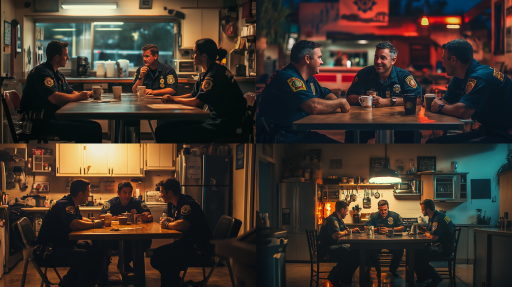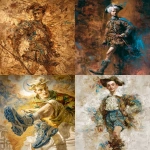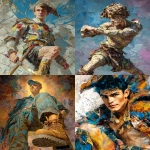Explore the Best AI Image Gallery

The Future of Product Photography: How AI is Elevating Visual Storytelling
In an age where visual imagery is paramount for consumer engagement, the intersection of artificial intelligence (AI) and product photography is becoming increasingly significant. AI technologies are reshaping the landscape of how products are captured and presented, leading to innovative approaches that not only enhance creativity but also streamline processes.
The Impact of AI on Product Photography
Traditionally, product photography has required a combination of skill, experience, and time. However, with the advent of AI, the creative industry is witnessing a transformation that enhances both efficiency and output quality. From automated editing to advanced imaging techniques, AI tools are revolutionizing how photographers and brands operate.
- Automated Editing: AI-driven software can now analyze images and apply edits such as color correction, background removal, and even cropping with a remarkable level of precision. This significantly reduces the time spent on post-production and allows photographers to focus more on the creative aspects of their work.
- Enhanced Imaging: Machine learning algorithms can predict lighting conditions and even suggest optimal angles for shooting, thereby improving the overall quality of the images captured. Moreover, AI can generate high-resolution images based on lower-quality inputs, making it easier for brands to produce visually striking content.
- Virtual Staging: AI can create virtual 3D environments, enabling product photographers to stage shoots in various settings without the physical constraints of a studio. This ability to create dynamic backdrops allows brands to present their products in more appealing contexts, potentially increasing sales.
Creative Collaboration with AI
AI doesn't replace photographers; rather, it redefines the creative process. The integration of AI tools promotes a partnership between technology and human creativity, allowing for new avenues of exploration in product styling and imagery. By leveraging AI, photographers can experiment with unconventional styles and approaches:
- Style Transfer: AI allows for the application of various artistic styles to product images, making it possible to visualize ideas that blend makeshift creativity with traditional art forms.
- Creative Filtering: AI algorithms can generate a multitude of variations on a single image by providing different filters or edits. This variety can offer brands a selection of visual content to choose from, ensuring they present their products in the best possible light.
Ethical Considerations in AI Product Photography
As with any technological advancement, the use of AI in product photography raises important ethical questions. The responsibility lies with brands and photographers to consider how AI influences the authenticity of their visual narratives:
- Authenticity vs. Manipulation: Consumers value authenticity. Excessive manipulation of images can lead to misleading representations of products, harming brand trust. Striking a balance between creativity and authenticity is crucial in maintaining consumer perceptions.
- Data Usage: Many AI tools rely on vast amounts of data to function optimally. This raises privacy concerns, especially regarding the handling of sensitive information during image generation or editing. Transparency about data usage is an ethical imperative for brands.
Future Trends in AI-Driven Product Photography
Looking ahead, we can anticipate that AI will continue to evolve its role in product photography, driving innovation across various sectors:
- Augmented Reality (AR) Integration: The fusion of AI with AR will create immersive experiences, allowing consumers to visualize products in their own environments before making a purchase.
- Personalization: AI can assist in creating personalized shopping experiences, such as tailored product recommendations, which could be directly influenced by how a product is visually presented.
- Cognitive Photography: Future advancements may lead to 'cognitive photography,' where AI not only aids in editing but can comprehend and convey the emotional narratives behind products, impacting buyer decision-making profoundly.
As we navigate through this evolving landscape, it's essential to acknowledge that AI in product photography is not simply a trend; it represents a fundamental shift in how we approach visual storytelling. With its ability to enhance creativity, streamline workflows, and prompt ethical considerations, AI is set to redefine the future of product photography.
](https://images.ai-img.art/thumbnails/150/8c3bd422d50d35735d8fb33bd314a79e30e5b150129d5d09bdad822a2007593f.webp)










](https://images.ai-img.art/thumbnails/150/1614d64dd7156c95db952258978be809eb3db8cea4453fec69c49cbdfe63fa94.webp)
](https://images.ai-img.art/thumbnails/150/3a60737a5b67fa252207ad1ae6db245a26284f53fb5846996bb34515b39ff269.webp)